
Answering Six Objections from the SSPX
Bishop Athanasius Schneider has recently thrown down the glove in an interview with LifeSiteNews, claiming that those of us who believe the Society of St. Pius X (SSPX) is still in schism have “a very […]

Bishop Athanasius Schneider has recently thrown down the glove in an interview with LifeSiteNews, claiming that those of us who believe the Society of St. Pius X (SSPX) is still in schism have “a very […]

Cardinal Michael Czerny. / Pablo Esparza/CNA
St. Louis, Mo., Mar 13, 2023 / 14:22 pm (CNA).
The cardinal who is seen as Pope Francis’ point man on the environment said in an address at Gonzaga University last week that universities, especially … […]

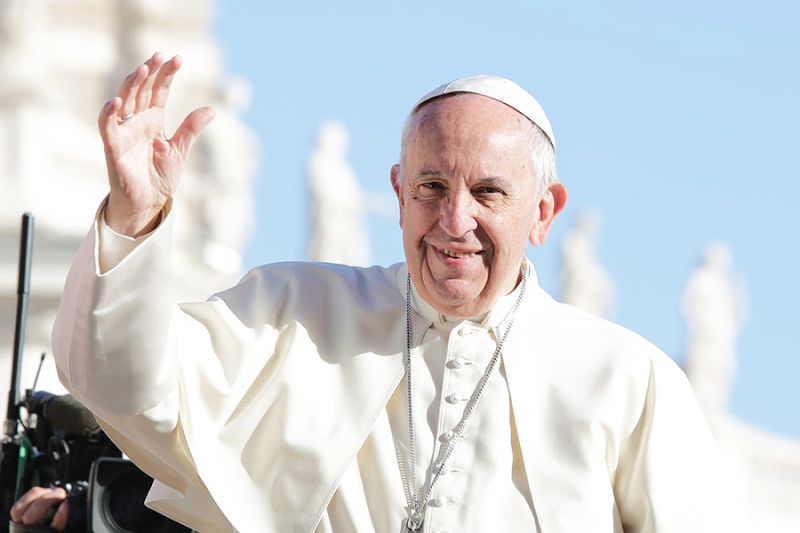 Pope Francis at the general audience in St. Peter’s Square, Oct. 5, 2016. / Daniel Ibanez/CNA.
Pope Francis at the general audience in St. Peter’s Square, Oct. 5, 2016. / Daniel Ibanez/CNA.
Washington, D.C. Newsroom, Mar 13, 2023 / 13:15 pm (CNA).
Today marks the 10th anniversary of the election of Pope Francis as the 265th successor of St. Peter. Here is a timeline of key events during his papacy:
March 13 — About two weeks after Pope Benedict XVI steps down from the papacy, Cardinal Jorge Bergoglio is elected pope. He takes the papal name Francis in honor of St. Francis of Assisi and proclaims from the central balcony of St. Peter’s Basilica: “Let us begin this journey, the bishop and people, this journey of the Church of Rome, which presides in charity over all the Churches, a journey of brotherhood in love, of mutual trust. Let us always pray for one another.”
March 14 — The day after he begins his pontificate, Pope Francis returns to his hotel to personally pay his hotel bill and collect his luggage.
July 8 — Pope Francis visits Italy’s island of Lampedusa and meets with a group of 50 migrants, most of whom are young men from Somalia and Eritrea. The island, which is about 200 miles off the coast of Tunisia, is a common entry point for migrants who flee parts of Africa and the Middle East to enter Europe. This is the pope’s first pastoral visit outside of Rome and sets the stage for making reaching out to the peripheries a significant focus.
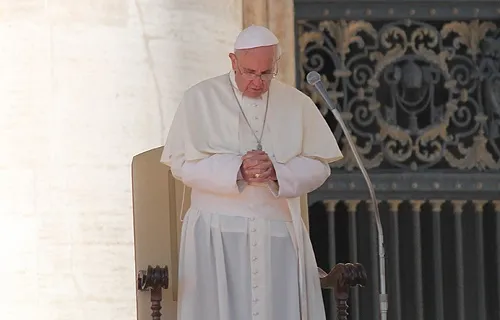
July 23–28 — Pope Francis visits Rio de Janeiro, Brazil, to participate in World Youth Day 2013. More than 3 million people from around the world attend the event.
July 29 — On the return flight from Brazil, Pope Francis gives his first papal news conference and sparks controversy by saying “if a person is gay and seeks God and has goodwill, who am I to judge?” The phrase is prompted by a reporter asking the pope a question about priests who have homosexual attraction.
Nov. 24 — Pope Francis publishes his first apostolic exhortation Evangelii gaudium (The Joy of the Gospel). The document illustrates the pope’s vision for how to approach evangelization in the modern world.
Feb. 22 — Pope Francis holds his first papal consistory to appoint 19 new cardinals, including ones from countries in the developing world that have never previously been represented in the College of Cardinals, such as Haiti.
March 22 — Pope Francis creates the Pontifical Commission for the Protection of Minors. The commission works to protect the dignity of minors and vulnerable adults, such as the victims of sexual abuse.
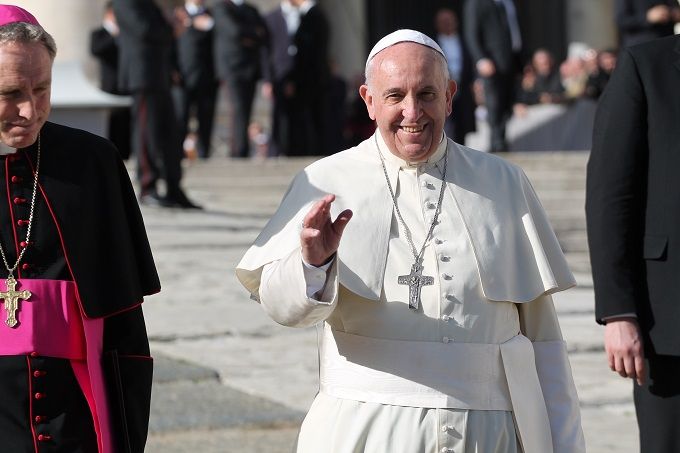
Oct. 5 — The Synod on the Family begins. The bishops discuss a variety of concerns, including single-parent homes, cohabitation, homosexual adoption of children, and interreligious marriages.
Dec. 6 — After facing some pushback for his efforts to reform the Roman Curia, Pope Francis discusses his opinion in an interview with La Nacion, an Argentine news outlet: “Resistance is now evident. And that is a good sign for me, getting the resistance out into the open, no stealthy mumbling when there is disagreement. It’s healthy to get things out into the open, it’s very healthy.”
Jan. 18 — To conclude a trip to Asia, Pope Francis celebrates Mass in Manila, Philippines. Approximately 6 million to 7 million people attend the record-setting Mass, despite heavy rain.
March 23 — Pope Francis visits Naples, Italy, to show the Church’s commitment to helping the fight against corruption and organized crime in the city.
May 24 — To emphasize the Church’s mission to combat global warming and care for the environment, Pope Francis publishes the encyclical Laudato si’, which urges people to take care of the environment and encourages political action to address climate problems.
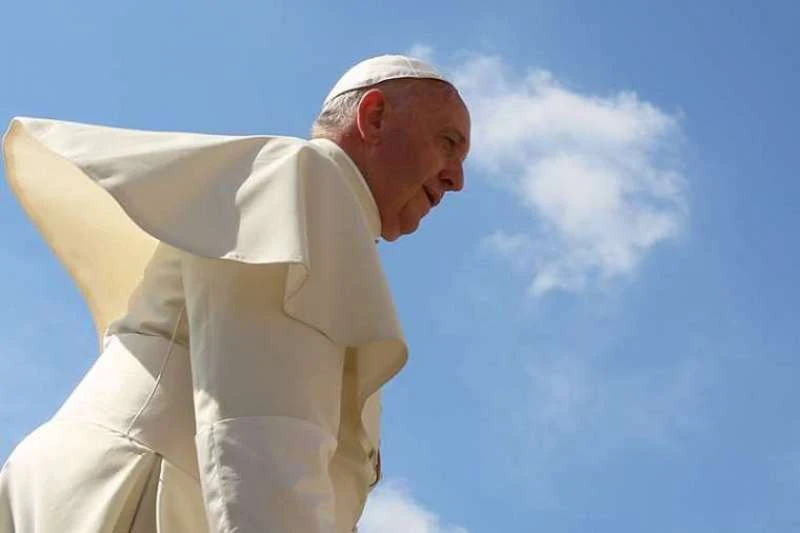
Sept. 19–22 — Pope Francis visits Cuba and meets with Fidel Castro in the first papal visit to the country since Pope John Paul II in 1998. During his homily, Francis discusses the dignity of the human person: “Being a Christian entails promoting the dignity of our brothers and sisters, fighting for it, living for it.”
Sept. 22–27 — After departing from Cuba, Pope Francis makes his first papal visit to the United States. In Washington, D.C., he speaks to a joint session of Congress, in which he urges lawmakers to work toward promoting the common good, and canonizes the Franciscan missionary St. Junípero Serra. He also attends the World Meeting of Families in Philadelphia, which focuses on celebrating the gift of the family.
Oct. 4 — Pope Francis begins the second Synod on the Family to address issues within the modern family, such as single-parent homes, cohabitation, poverty, and abuse.
Oct. 18 — The pope canonizes St. Louis Martin and St. Marie-Azélie “Zelie” Guérin. The married couple were parents to five nuns, including St. Therese of Lisieux. They are the first married couple to be canonized together.
Dec. 8 — Pope Francis’ Jubilee Year of Mercy begins. The year focuses on God’s mercy and forgiveness and people’s redemption from sin. The pope delegates certain priests in each diocese to be Missionaries of Mercy who have the authority to forgive sins that are usually reserved for the Holy See.
March 19 — Pope Francis publishes the apostolic exhortation Amoris laetitia, which discusses a wide variety of issues facing the modern family based on discussions from the two synods on the family. The pope garners significant controversy from within the Church for comments he makes in Chapter 8 about Communion for the divorced and remarried.
April 16 — After visiting refugees on the Greek island of Lesbos, Pope Francis allows three Muslim refugee families to join him on his flight back to Rome. He says the move was not a political statement.
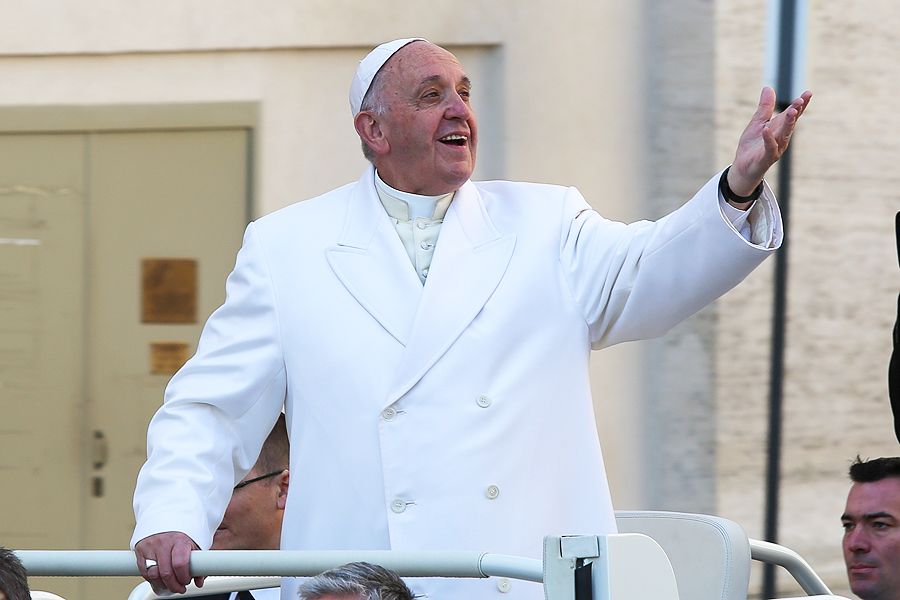
July 26–31 — Pope Francis visits Krakow, Poland, as part of the World Youth Day festivities. About 3 million young Catholic pilgrims from around the world attend.
Sept. 4 — The pope canonizes St. Teresa of Calcutta, who is also known as Mother Teresa. The saint, a nun from Albania, dedicated her life to missionary and charity work, primarily in India.
Sept. 30–Oct. 2 — Pope Francis visits Georgia and Azerbaijan on his 16th trip outside of Rome since the start of his papacy. His trip focuses on Catholic relations with Orthodox Christians and Muslims.
Oct. 4 — Pope Francis makes a surprise visit to Amatrice, Italy, to pray for the victims of an earthquake in central Italy that killed nearly 300 people.
May 12–13 — In another papal trip, Francis travels to Fatima, Portugal, to visit the Shrine of Our Lady of Fatima. May 13 marks the 100th anniversary of the first Marian apparition to three children in the city.
July 11 — Pope Francis adds another category of Christian life suitable for the consideration of sainthood: “offering of life.” The category is distinct from martyrdom, which only applies to someone who is killed for his or her faith. The new category applies to those who died prematurely through an offering of their life to God and neighbor.
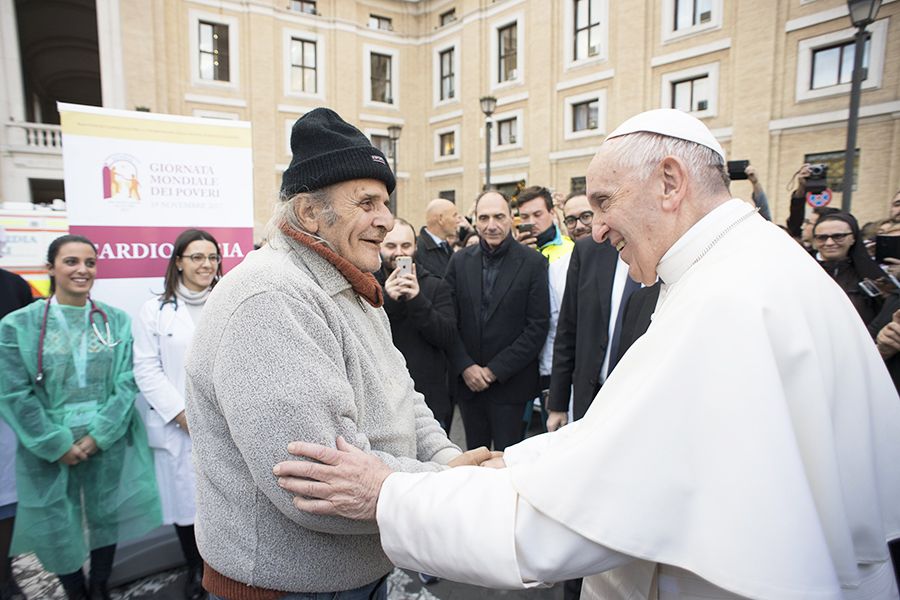
Nov. 19 — On the first-ever World Day of the Poor, Pope Francis eats lunch with 4,000 poor and people in need in Rome.
Nov. 27–Dec. 2 — In another trip to Asia, Pope Francis travels to Myanmar and Bangladesh. He visits landmarks and meets with government officials, Catholic clergy, and Buddhist monks. He also preaches the Gospel and promotes peace in the region.
Jan. 15–21 — The pope takes another trip to Latin America, this time visiting Chile and Peru. The pontiff meets with government officials and members of the clergy while urging the faithful to remain close to the clergy and reject secularism. The Chilean visit leads to controversy over Chilean clergy sex abuse scandals.
Aug. 2 — The Vatican formally revises No. 2267 of the Catechism of the Catholic Church, which concerns the death penalty. The previous text suggested the death penalty could be permissible in certain circumstances, but the revision states that the death penalty is “inadmissible.”
Aug. 25 — Archbishop Carlo Viganò, former papal nuncio to the United States, publishes an 11-page letter calling for the resignation of Pope Francis and accusing him and other Vatican officials of covering up sexual abuse including allegations against former Cardinal Theodore McCarrick. The pope initially does not directly respond to the letter, but nine months after its publication he denies having prior knowledge about McCarrick’s conduct.
Aug. 25–26 — Pope Francis visits Dublin, Ireland, to attend the World Meeting of Families. The theme is “the Gospel of family, joy for the world.”
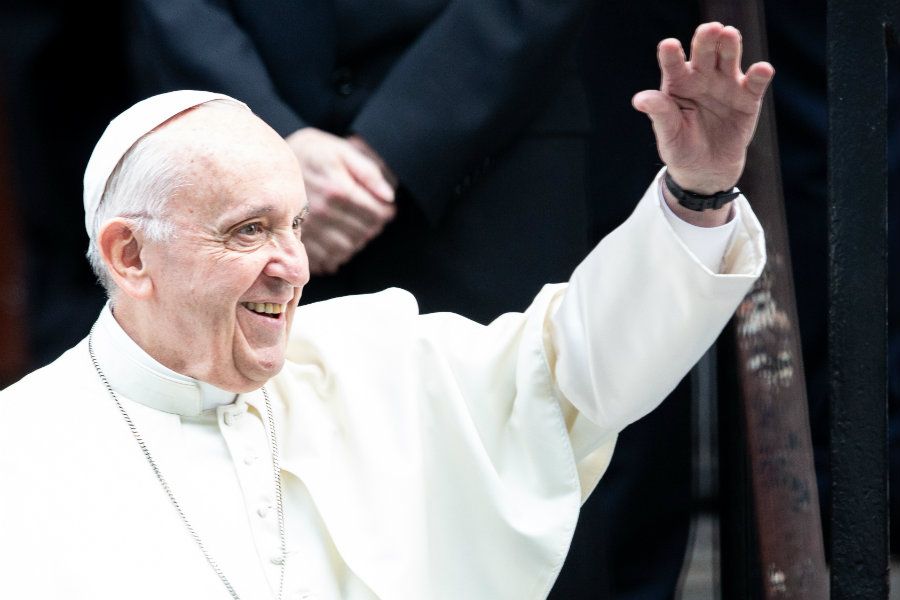
Oct. 3–28 — The Synod on Young People, the Faith, and Vocational Discernment takes place. The synod focuses on best practices to teach the faith to young people and to help them discern God’s will.
Jan. 22–27 — The third World Youth Day during Pope Francis’ pontificate takes place during these six days in Panama City, Panama. Young Catholics from around the world gather for the event, with approximately 3 million people in attendance.
Feb. 4 — Pope Francis signs a joint document in with Sheikh Ahmed el-Tayeb, the grand imam of Al-Azhar, in Abu Dhabi, United Arab Emirates, titled the “Document on Human Fraternity for World Peace and Living Together.” The document focuses on people of different faiths uniting together to live peacefully and advance a culture of mutual respect.
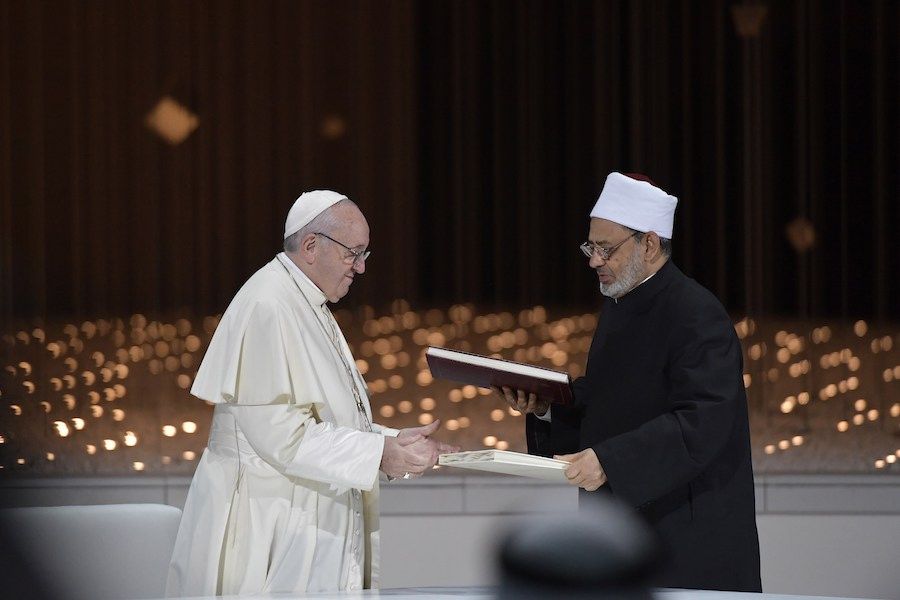
Feb. 21–24 — The Meeting on the Protection of Minors in the Church, which is labeled the Vatican Sexual Abuse Summit, takes place. The meeting focuses on sexual abuse scandals in the Church and emphasizes responsibility, accountability, and transparency.
Oct. 6–27 — The Church holds the Synod of Bishops for the Pan-Amazon region, which is also known as the Amazon Synod. The synod is meant to present ways in which the Church can better evangelize the Amazon region but leads to controversy when carved images of a pregnant Amazonian woman, referred to by the pope as Pachamama, are used in several events and displayed in a basilica near the Vatican.
Oct. 13 — St. John Henry Newman, an Anglican convert to Catholicism and a cardinal, is canonized by Pope Francis. Newman’s writings inspired Catholic student associations at nonreligious colleges and universities in the United States and other countries.
March 15 — Pope Francis takes a walking pilgrimage in Rome to the chapel of the crucifix and prays for an end to the COVID-19 pandemic. The crucifix was carried through Rome during the plague of 1522.
March 27 — Pope Francis gives an extraordinary Urbi et Orbi blessing in an empty and rain-covered St. Peter’s Square, praying for the world during the coronavirus pandemic.
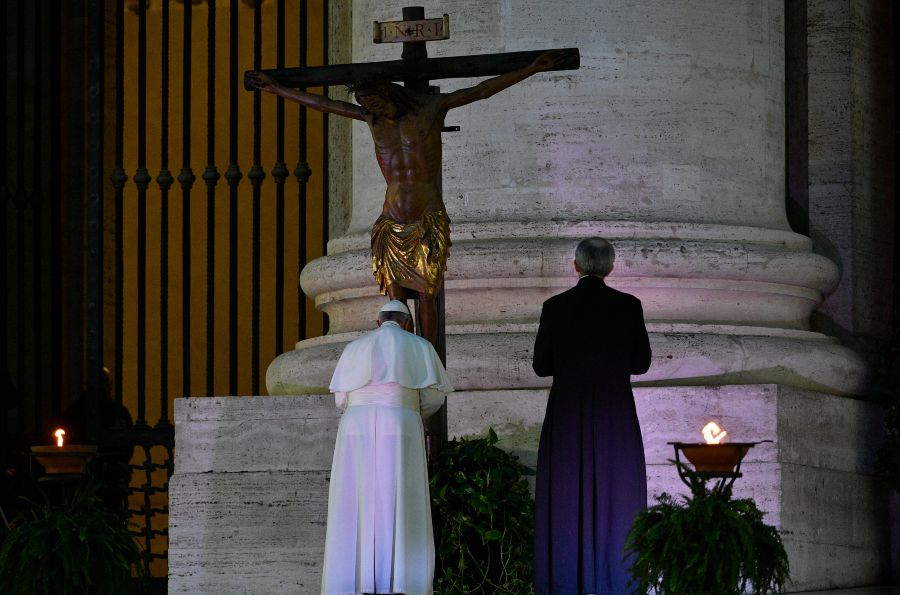
March 5–8 — In his first papal trip since the start of the COVID-19 pandemic, Pope Francis becomes the first pope to visit Iraq. On his trip, he signs a joint statement with Grand Ayatollah Ali al-Sistani condemning extremism and promoting peace.
July 3 — Cardinal Giovanni Angelo Becciu, who was elevated to the College of Cardinals by Pope Francis, is indicted in a Vatican court for embezzlement, money laundering, and other crimes. The pope gives approval for the indictment.
July 4 — Pope Francis undergoes colon surgery for diverticulitis, a common condition in older people. The Vatican releases a statement that assures the pope “reacted well” to the surgery. Francis is released from the hospital after 10 days.
July 16 — Pope Francis issues a motu proprio titled Traditionis custodes. The document imposes heavy restrictions on the celebration of the Traditional Latin Mass.
Dec. 2–6 — The pope travels to Cyprus and Greece. The trip includes another visit to the Greek island of Lesbos to meet with migrants.

Jan. 11 — Pope Francis makes a surprise visit to a record store in Rome called StereoSound. The pope, who has an affinity for classical music, blesses the newly renovated store.
March 19 — The pope promulgates Praedicate evangelium, which reforms the Roman Curia. The reforms emphasize evangelization and establish more opportunities for the laity to be in leadership positions.
May 5 — Pope Francis is seen in a wheelchair for the first time in public and begins to use one more frequently. The pope has been suffering from knee problems for months.

July 24–30 — In his first papal visit to Canada, Pope Francis apologizes for the harsh treatment of the indigenous Canadians, saying many Christians and members of the Catholic Church were complicit.
Jan. 31–Feb. 5 — Pope Francis travels to the Democratic Republic of Congo and South Sudan. During his visit, the pope condemns political violence in the countries and promotes peace. He also participates in an ecumenical prayer service with Anglican Archbishop of Canterbury Justin Welby and Moderator of the Church of Scotland Iain Greenshields.

Police have released images from a surveillance camera of a suspect they say vandalized Our Lady of Lourdes Catholic Church in Gales Ferry, Connecticut, on March 11, 2023. / Ledyard Police Department
Washington, D.C. Newsroom, Mar 13, 2023 / 11… […]

Pope Francis greets pilgrims from the popemobile in St. Peter’s Square on March 8, 2023. / Daniel Ibáñez/CNA
Rome Newsroom, Mar 13, 2023 / 10:20 am (CNA).
Pope Francis marked his 10th anniversary as pope Monday with a private Mass with cardinal… […]

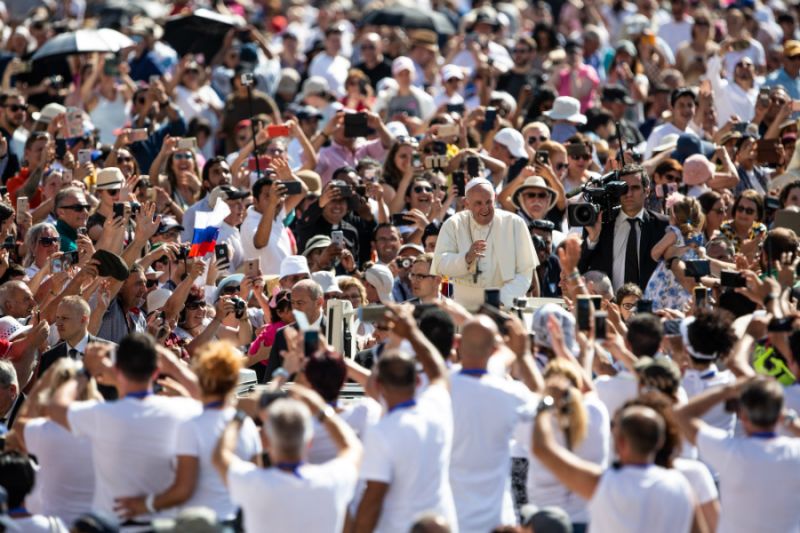 Pope Francis at his weekly Wednesday audience in St. Peter’s Square June 26, 2019. / Daniel Ibanez/CNA.
Pope Francis at his weekly Wednesday audience in St. Peter’s Square June 26, 2019. / Daniel Ibanez/CNA.
St. Louis, Mo., Mar 13, 2023 / 03:00 am (CNA).
Pope Francis was elected to the papacy 10 years ago, on March 13, 2013. How has the worldwide Catholic Church changed since then?
Statistically speaking, the Church has grown, keeping pace with and even exceeding overall world population growth. The total number of Catholics worldwide grew from 1.253 billion in 2013 to 1.378 billion in 2021, an increase of nearly 10%. During the same period, the world’s population as a whole grew by 9.1%, according to the World Bank.
Despite this increase, the Church performed 2 million fewer baptisms in 2020 than in 2013. The number of marriages declined by 702,246, or nearly a third. Confirmations and first Communions also dropped by 12% and 13%, respectively, despite relatively stable levels of Mass attendance in the world’s 13 most Catholic countries.
A Catholic researcher told CNA this week that the biggest likely reason for this drop in participation in the sacraments is not hard to guess — three of the 10 years of Francis’ pontificate have been marked by the worldwide effects of a pandemic. But that’s not the only reason, he says.
“I don’t know if the Catholic world has changed as much as just the world [in general] has changed,” Mark Gray, senior researcher with the Center for Applied Research in the Apostolate (CARA) at Georgetown University, told CNA.
“The Church and Pope Francis and bishops have had to try to navigate their way through some really challenging demographic changes as well as the pandemic. And the Catholic Church has come out of these better than many other Christian denominations. So there’s good news there, but there’s still a lot to weather. There’s a headwind, I would say, against the Church.”
The drop in participation in the sacraments worldwide is not due only to the pandemic, he cautioned, but rather is part of a much larger demographic trend worldwide of declining births. According to the World Bank’s world development indicators, life expectancies at birth have been increasing globally from 51 years in 1960 to 72 years in 2020. At the same time, Gray wrote, the birth rate per 1,000 people has fallen from 32 in 1960 to 17 in 2020.
“The number of births is expected to decline annually into the foreseeable future, eventually being outnumbered by deaths in 2085, according to U.N. projections,” Gray wrote in a March 9 blog post.
“The population will grow in the decades ahead as life expectancies continue to increase but at the same time births will decline and that will result in fewer baptisms, fewer first Communions, fewer students, and yes even fewer marriages annually just by the numbers of the demographic shift we are experiencing.”
Gray wrote that the full effects of the COVID-19 pandemic lockdowns, which prevented Catholics around the world from accessing the sacraments for a time, will likely take years to fully quantify. He also cautioned that two of the most authoritative sources for the number of Catholics have significant lags in their data. The most recent full dataset contained in the current edition of the Vatican’s Annuarium Statisticum Ecclesiae is for 2020, though the Vatican’s newspaper published a summary of the 2021 statistics earlier this month. The Official Catholic Directory, which covers the United States, goes up to 2021.
“Any impact, positive or negative, Pope Francis may have had will be overshadowed by the effects of the COVID-19 pandemic when our most current data represents 2020 and 2021,” Gray wrote.
“We know looking at Church data for these years we are going to see lower levels of Mass attendance and sacramental practice with the impact of lockdowns, restrictions, and hesitancy for people to gather in crowds in enclosed spaces during those two years.”
Other statistical indicators present a mixed picture of the Church’s growth in some areas and recession in others. For example, the total number of students in Catholic schools is up by 7.3% since 2013.
“One of the really bright signs for the Church is growth in Catholic education globally; more of the world’s youth are being educated in Catholic schools than they have in years and decades past,” Gray noted to CNA.
The number of diocesan priests worldwide appears to be virtually unchanged in the decade of Pope Francis’ pontificate, while the number of religious priests dipped only slightly. The number of religious sisters worldwide suffered a larger drop of nearly 11%.
According to the Vatican, however, the number of seminarians worldwide has been decreasing since 2013. The 2021 report shows the number of seminarians across the globe decreased by 1.8% since 2020. The sharpest declines were in North America and Europe, where the number of seminarians decreased by 5.8% on both continents.
Despite overall growth in the number of Catholics worldwide, that growth has not been evenly distributed. Overall, Africa has a higher baptism rate than Europe and a far higher rate of Mass attendance in countries with large Catholic populations. Another recent analysis by CARA found that Nigeria, Kenya, and Lebanon have the highest proportion of Catholics who attend Mass weekly or more, with Nigeria as the clear leader. Ninety-four percent of Catholics in Nigeria say they attend Mass at least weekly. In Kenya, the figure was 73%, and in Lebanon it was 69%. In comparison, countries like Germany, France, Switzerland, and the Netherlands are all under 15%.
In addition, Africa bucks the trend of declining vocations by showing an increase in seminarians and religious brothers, according to the 2021 Vatican statistics. Africa also saw the only increase in seminarians and religious brothers across the globe from 2020-2021, at 0.6%. The number of religious brothers in Africa increased by 2.2% during the same time frame.
Pope Francis has made pastoral attention to Africa a priority of late, making a visit to the heavily Catholic Democratic Republic of Congo and South Sudan last month to an enthusiastic welcome.
Focusing on the United States — where a mere 5% of the world’s Catholics live — the picture is a bit less optimistic. In contrast to the stable numbers of the world as a whole, the number of diocesan priests in the U.S. dropped 8% from 2013 to 2021. There are 27% fewer sisters, 19% fewer brothers, and 15% fewer religious priests compared with a decade ago, though the number of permanent deacons has increased slightly, by 3%. Gray said the United States disproportionately relies on immigrant priests to address its own shortages.
Additionally, according to the General Social Survey, weekly Mass attendance among Catholics in the U.S. declined from 25% in 2012 to 17% in 2020-2021. The drop in sacramental participation in the U.S. — baptisms, marriages, etc. — mirrors the global trends.
As well, “since 2013, we’ve lost more than 1,000 parishes through reorganizations and closures,” Gray noted.
“Daily prayer declined from 59% to 51% from 2012 to 2020-2021. Unlike Mass attendance, one can pray at home and this should not have been affected by the pandemic. If anything, one might think Catholics would be praying more often during that time.”
Gray again cautioned that there are much larger demographic and social changes going on in the U.S. — and in the world at large — than can be attributed solely to Pope Francis’ leadership.
“No one should be giving Pope Francis a 10-year report card based on the most current data available,” he concluded.
“And when more comparable post-COVID-19 data are available, any ‘grades’ given for changes in the number of sacraments celebrated should be considered within the context of what is happening demographically across the globe.”
Speaking with CNA, he added: “It’s hard to make this comparison [between 2013 and 2023] because we have these lags in the data … We’ll know more in a couple of years when the data catches up with us.”

Pope Francis’s ten years in office have given us some impressive successes and notable failures. Most of the successes have been of the optical sort and fleeting—moments truly magnificent to behold, occasionally terrible and always […]

Pope Francis gives the Angelus address on March 12, 2023. / Vatican Media.
Vatican City, Mar 12, 2023 / 06:37 am (CNA).
People are looking for an oasis in the Catholic Church from which to slake the thirst left by busyness, indifference, and co… […]

Pope Francis meets with Russian Orthodox Patriarch Kirill in Havana, Cuba. on Feb. 12, 2016. / Vatican Media.
Vatican City, Mar 12, 2023 / 06:00 am (CNA).
In his public diplomatic efforts in the war in Ukraine, Pope Francis has repeatedly said … […]

If a decade under Francis has taught us anything, it is that there is exactly nothing new under the sun and precisely nothing new in the broad survey of the state of the Church at […]
© Catholic World Report